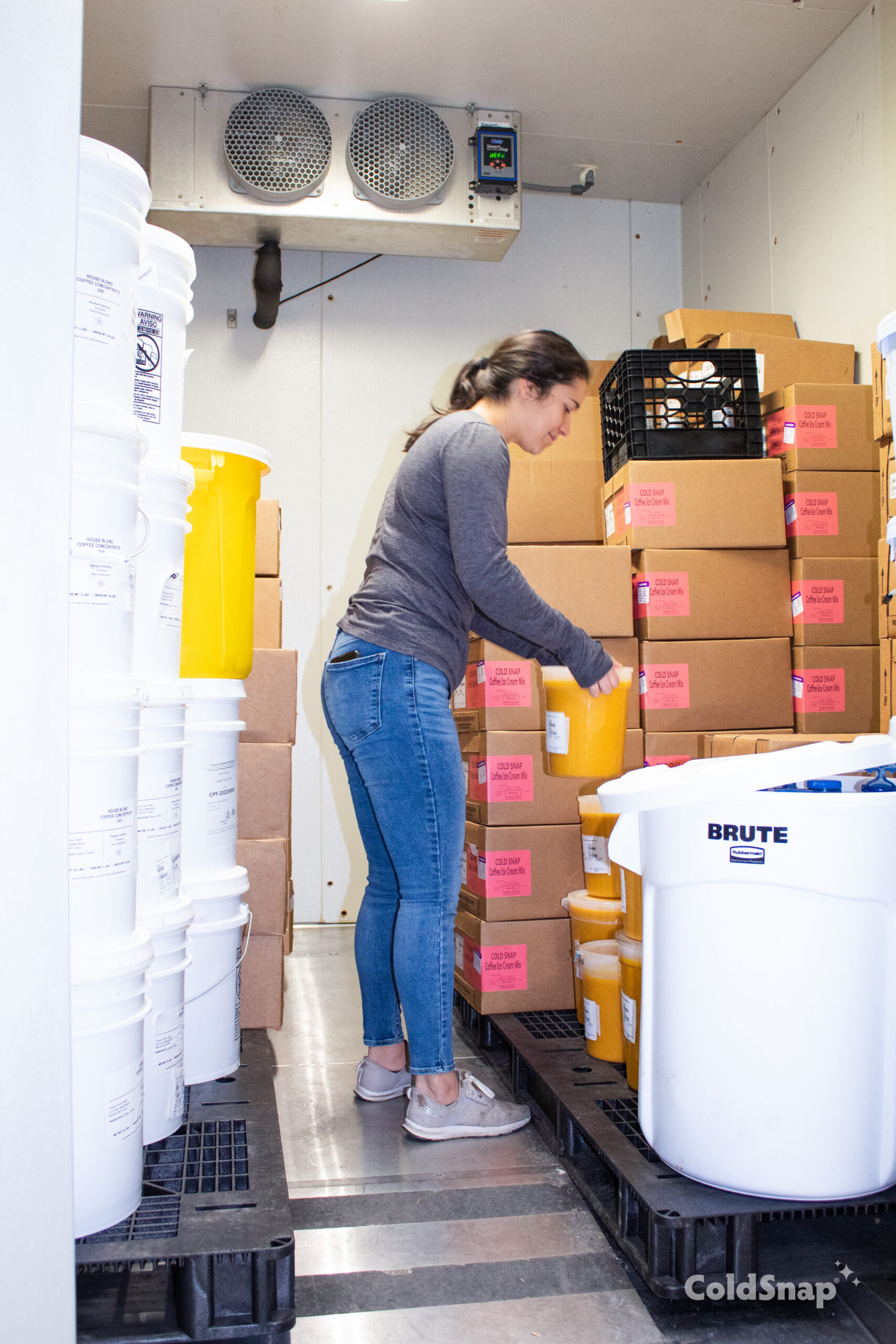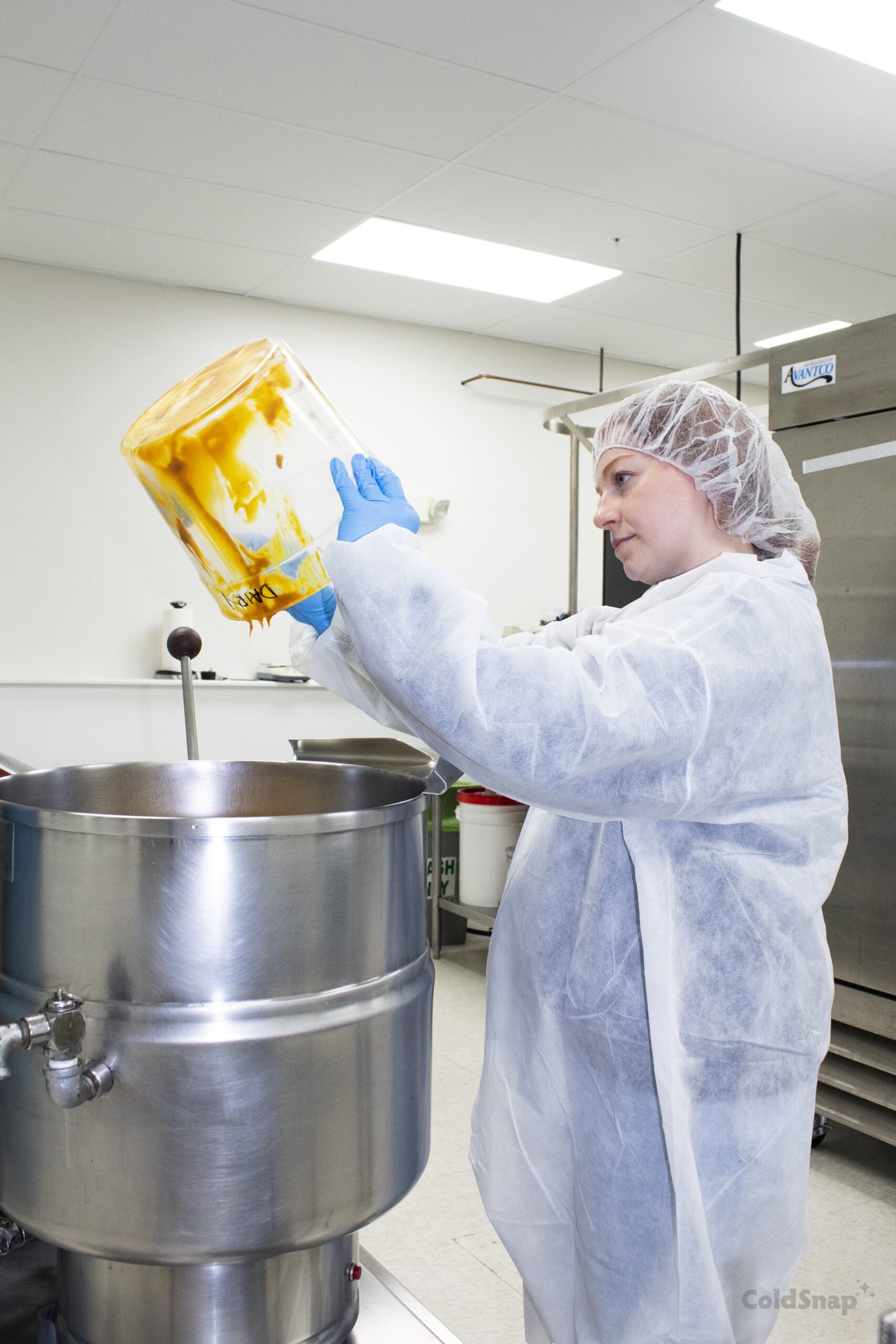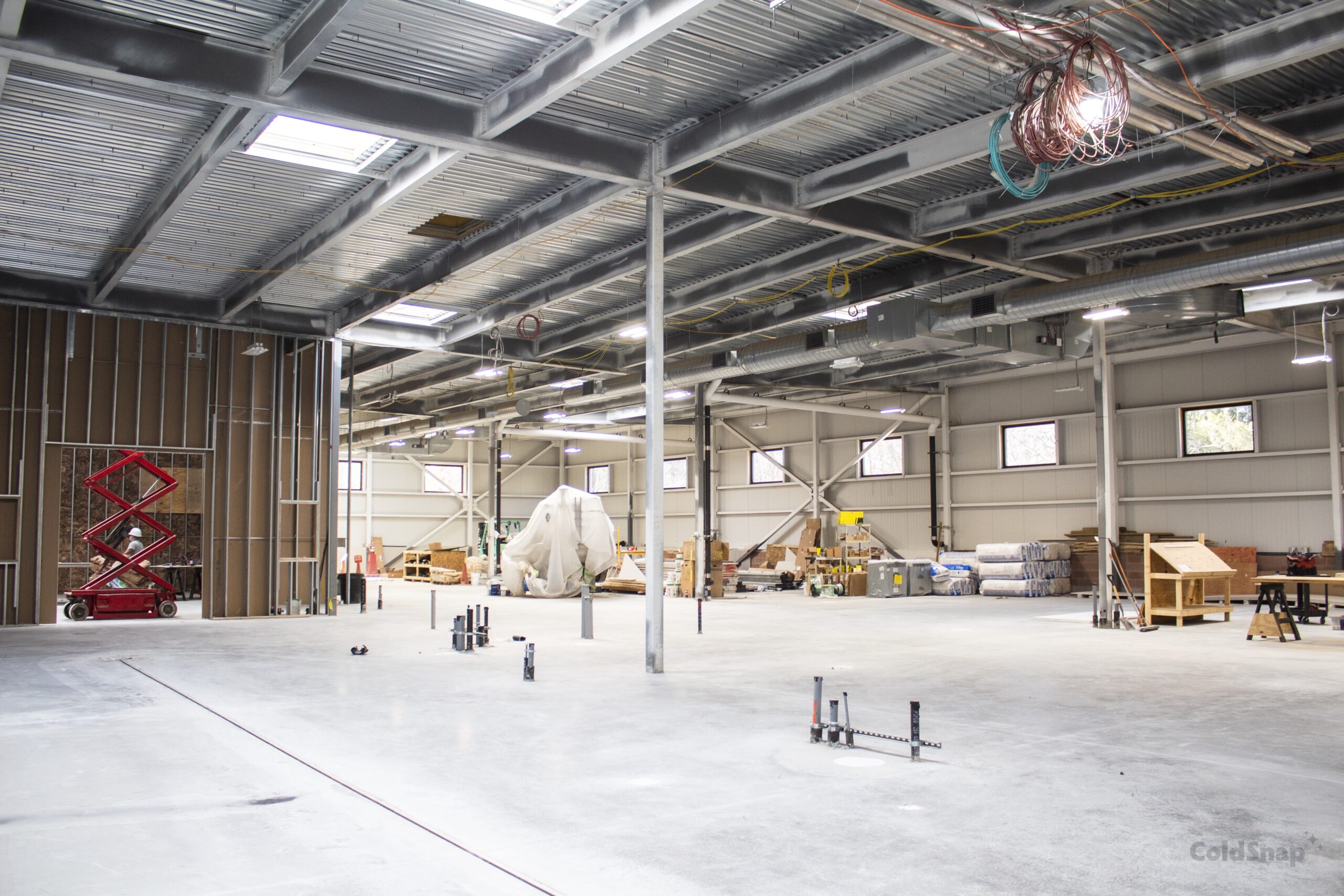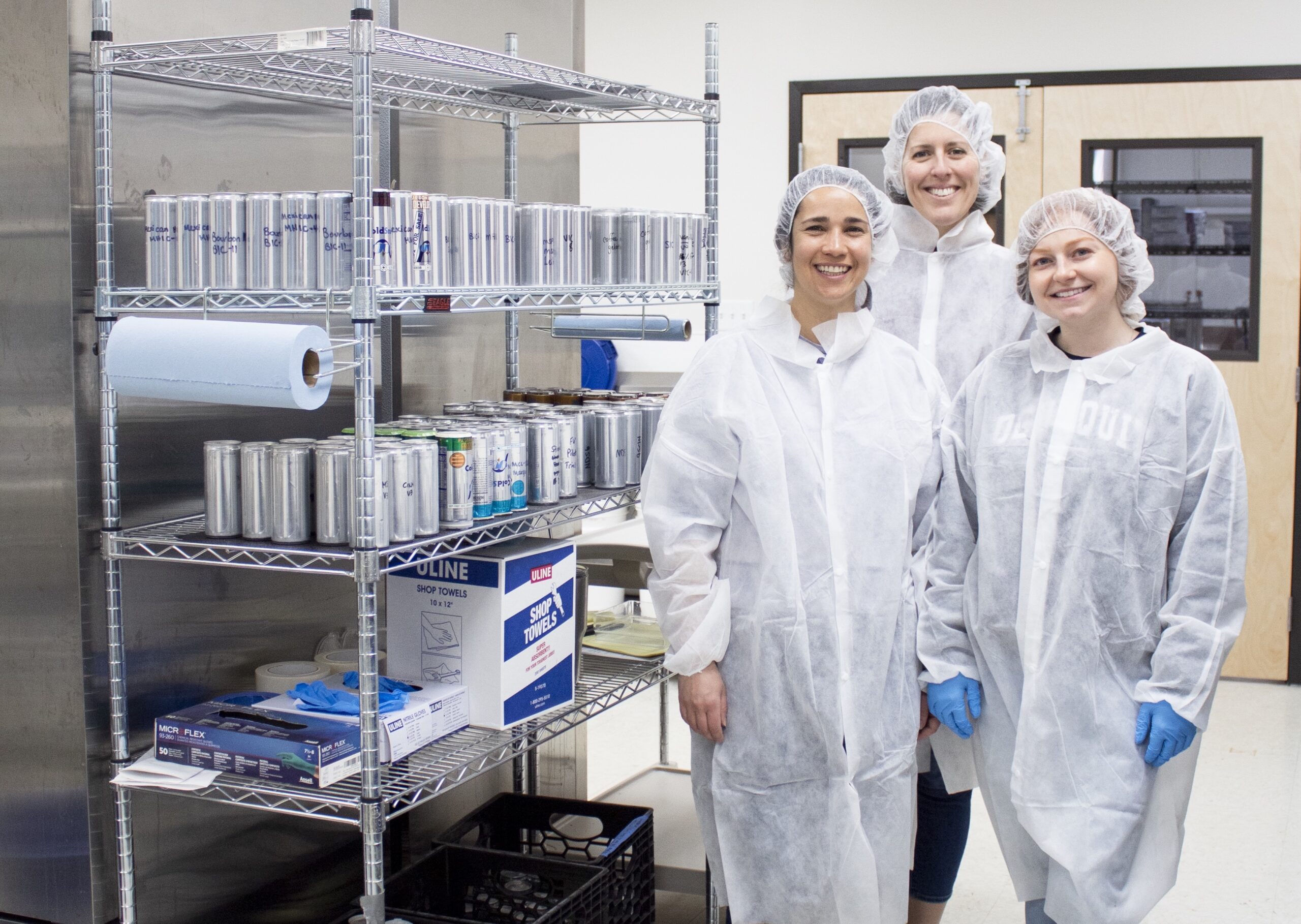The Food Science Team
At ColdSnap, every employee brings a unique set of skills and experiences to the table. The food science team may be small, but their shared knowledge and backgrounds are expansive. With combined degrees in nutrition, food science, microbiology, and biotech, as well as food safety experience, the food science team knows how to develop, test, and manufacture any kind of frozen treat you could think of. While researching and developing new flavors might sound fun (and it is), there are always some challenges. Let’s go behind the scenes with the ColdSnap food science team!

The food science team members
The first step in the creative development process for ColdSnap’s tasty frozen treats is to plan what kind of product they would like to make. Next, they narrow down the flavor and pick which ingredients they need to experiment with. Premium ice cream—ColdSnap’s flagship category—tastes so delicious in the ColdSnap ice cream machine that there’s a high demand to expand flavors for this product line. After receiving such high praise for their decadent ice creams, the team was prompted to dive into other product categories such as frozen lattes, non-dairy frozen desserts, boozy ice creams, and cocktails. Now, the team is even developing healthy treats like frozen smoothies and protein shakes for those who want to indulge in ColdSnap’s products in a more health-conscious way.
Once they come up with an idea for a new product or flavor, it’s time to source ingredients and hit the kitchen!
Ingredient Sourcing & Supplier Relations
If you’ve ever wondered what kind of work goes into producing ColdSnap’s smooth, creamy ice cream or our other frozen concoctions, then you should know that supplier and ingredient sourcing play a large role in the production process. Selecting a supplier impacts the quality of the product and consumer safety, so it’s critical to source from vendors who provide the highest quality ingredients. Finding high quality ingredients can be more costly than generic ones, so the food science team must compromise on pricier ingredients to retain a clean label and ensure the finished product looks and tastes delicious.
It’s worth noting that established suppliers provide hundreds of pounds of both liquid and dry ingredients for production runs, unlike your local grocery store. For large production runs, there are risks associated with grocery store purchases, such as tampered or expired products, and lack of traceability. So, while the ColdSnap team will sometimes do a grocery store run to grab ingredients for initial testing, when making products for public consumption, this is not an option.

Laura grabbing some fresh ingredients from the freezer
Finding reliable suppliers who provide clean-label ingredients is crucial and sometimes difficult because ColdSnap never uses artificial ingredients, such as artificial colors or flavors. Thankfully, ColdSnap now has approved suppliers for everything from milk, cream, and sugar to frozen fruits and nutraceuticals like mushroom powder, turmeric, and collagen! With ingredients sourced, the team is ready to don their lab coats and hair nets and head into the kitchen.
Inside the ColdSnap Kitchen
Conducting research and development (R&D) is one tasty and exciting part of working on the food science team. When a new product needs to hit the market, the food science team must first evaluate recipes. Whether it is tweaking a current recipe or establishing an entirely new one, there are numerous calculations to be performed. Recipes must meet certain nutritional values and contain fresh ingredients. If the formula is for a new ice cream, it is essential to track percent milkfat, percent solids, and percent MSNF (milk solids not fat) so that it maintains its “premium” ice cream status.

ColdSnap Salted Caramel Ice Cream
After an experimental recipe is developed, the team prepares the ingredients, weighing them out with measuring cups, spoons, bowls, and small buckets. Then, the wet and dry ingredients are mixed using an immersion blender and heated in a kettle. If the recipe has milk or cream, it’ll get homogenized – this is a critical step for ensuring fats and flavors are uniformly distributed throughout the product.

Kayla pouring fruit juice into the kitchen kettle
One challenge with dairy-based products is that they can taste different after the mix is homogenized, so ice creams, dairy protein shakes, and lattes can take even longer to develop than other products.
On the other hand, cocktails are quicker and easier to experiment with. Depending on the recipe, different spirits and liqueurs are mixed with all-natural fruit juice, and a few other simple ingredients, and then it’s canned. It’s safe to say that the food science team enjoys cocktail R&D—especially when it comes to taste tests! Performing taste tests allows the team to note the flavor, texture, and scent of their new creation, and to gather opinions from the broader ColdSnap team. The taste tests also reveal the products’ ability to withstand both the sterilization process and the freezing cycle in ColdSnap’s machine. Sterilizing and freezing a product impact flavor and appearance, so the food science team works hard to ensure the product holds up well after undergoing such extreme temperatures.
While it all may sound straightforward, the food science team spends hours inside the test kitchen perfecting a recipe. Oftentimes, the cycle is repeated daily or weekly until the tastiest product possible is created. Some products have required over 70 iterations before they are finalized for production runs!
Co-Manufacturers
As ColdSnap grows, so does the demand for ice cream and other frozen treats. Because ColdSnap’s Billerica, MA location only has so much space and manpower, co-manufacturing is a necessity. ColdSnap recruits co-manufacturers to assist with the production of thousands of gallons of ice cream, frozen lattes, dairy-free desserts, and protein shakes. They’re often eager to work with ColdSnap after they taste how delicious our products are and see our fascinating rapid-freezing technology. Sometimes, the food science team takes a trip to visit these plants to facilitate the production runs and learn about the scale-up process.

A sneak peak at the new addition to the ColdSnap manufacturing floor
ColdSnap HQ will have a lot more space to make frozen treats, as a 20,000-square foot production build out is underway. This new space, combined with our co-manufacturer relationships, will allow us to produce enough frozen confections to support our commercial launch later this year!
So now you know what goes on behind the scenes at ColdSnap! Crafting the perfect frozen treat requires a lot more work than just grabbing some ingredients and putting them into a can. Every step of the production process, from research and development to full scale production at a co-manufacturer’s plant, is meticulously tracked, researched, revised, reviewed, and tested for your safety and tasty enjoyment!
By Kayla Center
Photos by Allyson Preble
Get the Scoop
Stay in the loop on all things ColdSnap with our newsletter.


